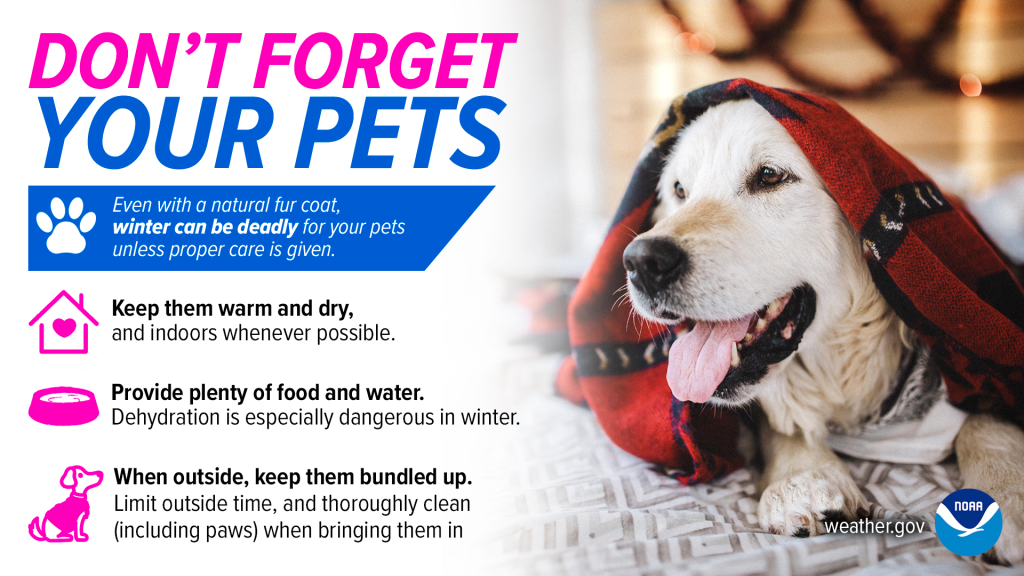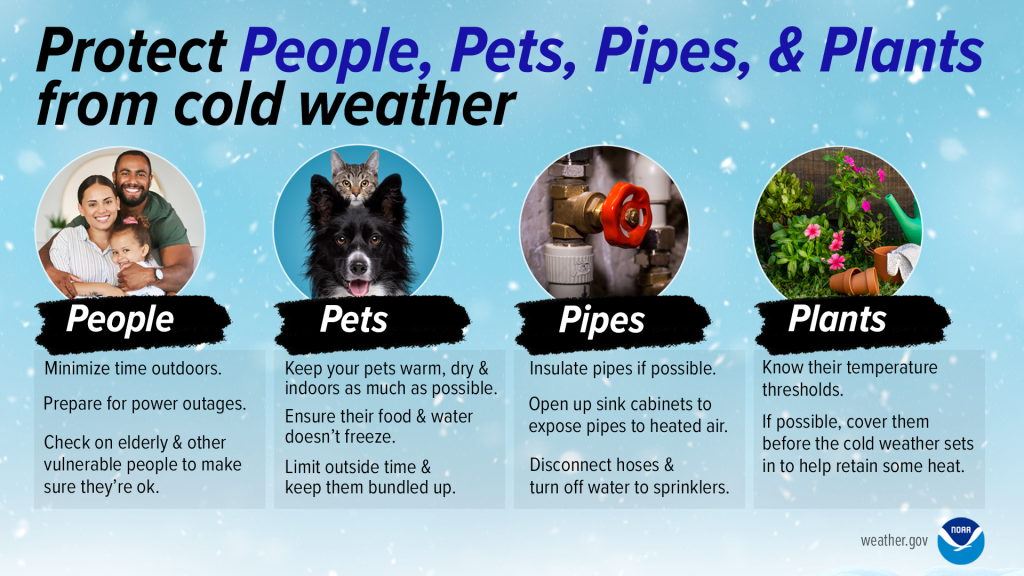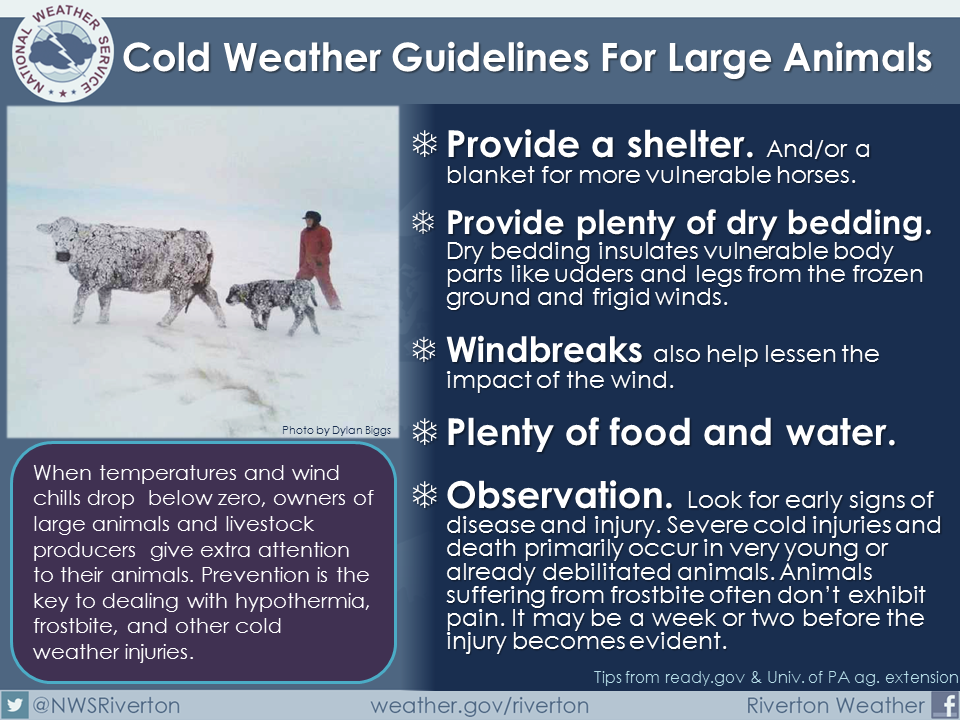
If You’re Cold, Your Pets Are Too
MADISON, Wis. (CIVICMEDIA) – Winter weather is here, whether we like it or not. While we may be used to the turn of the temperatures, are your pets protected?
There are some animals that love the cold weather… like polar bears, snow leopards and the arctic fox. Even some birds, like the snowy owl, withstand the brutal winters with their thicker feathers to keep warm. But like the caribou, we’re stuck here for the arctic blasts and so are our pets.
Simply said, if you’re cold… they’re cold too. So bring them inside. If dogs have to remain outdoors, they need to be in an enclosed kennel with a dog house as a shelter from the cold.
Just like people, pets’ cold tolerance can vary from pet to pet based on their coat, body fat, activity level, and health. So be aware of your animals tolerance for cold weather, and adjust accordingly. For example, you’ill probably need to shorten your dog’s walks in frigid temperatures to protect you both from weather-associated health risks.
Long-haired or thick-coated dogs tend to be more cold-tolerant, but are still at risk in cold weather. While short-haired pets feel the cold the fastest with less protection. And short-legged pets may also become cold faster because their bellies and bodies are more likely to come into contact with the snow-covered ground.
Pets with diabetes, heart disease, kidney disease, or hormonal imbalances may also have a harder time regulating their body temperatures.
The same goes for very young and very old pets. If you need help determining your pet’s temperature limits, consult your veterinarian.

Some things you can do now is provide choices or stay inside. Play dress up and consider a dog sweater or coat. And check their paws. They could crack or bleed from stepping on ice and are also prone to frostbite, just like us.
And arthritic and elderly pets may have more difficulty walking on snow and ice and may be more prone to slipping and falling, too.
Be aware, if your pet is whining, shivering, seems anxious, slows down or stops moving. Or they seem weak and start looking for warm places to burrow, get them back inside quickly because they are showing signs of hypothermia.
Stay warm and safe this winter, both you and your entire family including the fur babies.

Livestock in the state are also at risk with the frigid temperatures. Cattle work to maintain a constant core body temperature around 101ºF. During the winter, the need to maintain their core body temperature becomes a challenge and can cause cold stress.
- Cattle expected to live outside during the winter should remain outside to adjust to the changing conditions as winter approaches.
- A windbreak is the single most important factor for the success of your cattle riding out severe winter weather.
- Building a defined bedded pack behind your windbreak is one of the best ways to provide a dry place for your cattle.
- Stable body condition through the winter months will ensure cattle are best prepared to ride out severe winter weather when it happens.
- In extreme cold, cattle require more calories to maintain their body condition and stay warm.
- During severe winter weather, water access can be compromised and should be checked daily in the winter months.

Want More Local News?
Civic Media
Civic Media Inc.
The Civic Media App
Put us in your pocket.
